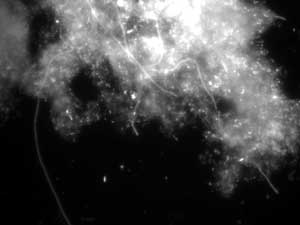The goal of this project is to get a concise picture of the capacity of a complete complex microbial community in a wastewater treatment plant (WWTP) to exchange genetic material via plasmids (i.e., the plasmid mobilome) and to understand the variability of the mobilome as a function of WWTP operation. WWTPs, a significant if rather unpalatable part of the output of modern societies, are among the largest known open cultured microbial ecosystems. The microbial community composition in WWTPs develops as a function of the selective pressure by mixtures of household, hospital, and industrial wastes. Among the important functions of WWTPs are nutrient removal and organic carbon and toxic compound degradation, issues in line with the DOE’s missions. On the other hand, not all compounds (e.g., pharmaceuticals) are efficiently removed by WWTPs, and there is strong concern about antibiotic resistance development, the presence of cryptic pathogenicity determinants among the microbial biomass, and hygienic aspects of downstream microbial discharges, all with potentially important socioeconomic consequences.

Epifluorescence micrograph of a bacterial floc in a wastewater treatment plant (DAPI stained). Photo courtesy of Robin Tecon, Univ. of Lausanne
Contemporary genomic approaches offer an unprecedented chance to investigate the global plasmid DNA reservoir, plasmid diversity, the presence of mobile elements, and the functional adaptive potential in a typical WWTP, a melting pot of hundreds of different microbial species, many of which are not yet known in pure culture. By capturing the plasmid mobilome not just once, but from two different though similar regular WWTPs, we hope to get not only an idea of the functional gene content of the plasmid mobilome (besides all the detailed information on plasmid types and diversity), but also an idea of the reproducibility of the formation and content of the plasmid pool.
Principal Investigators: Jan Roelof van der Meer (Univ. of Lausanne, Switzerland)